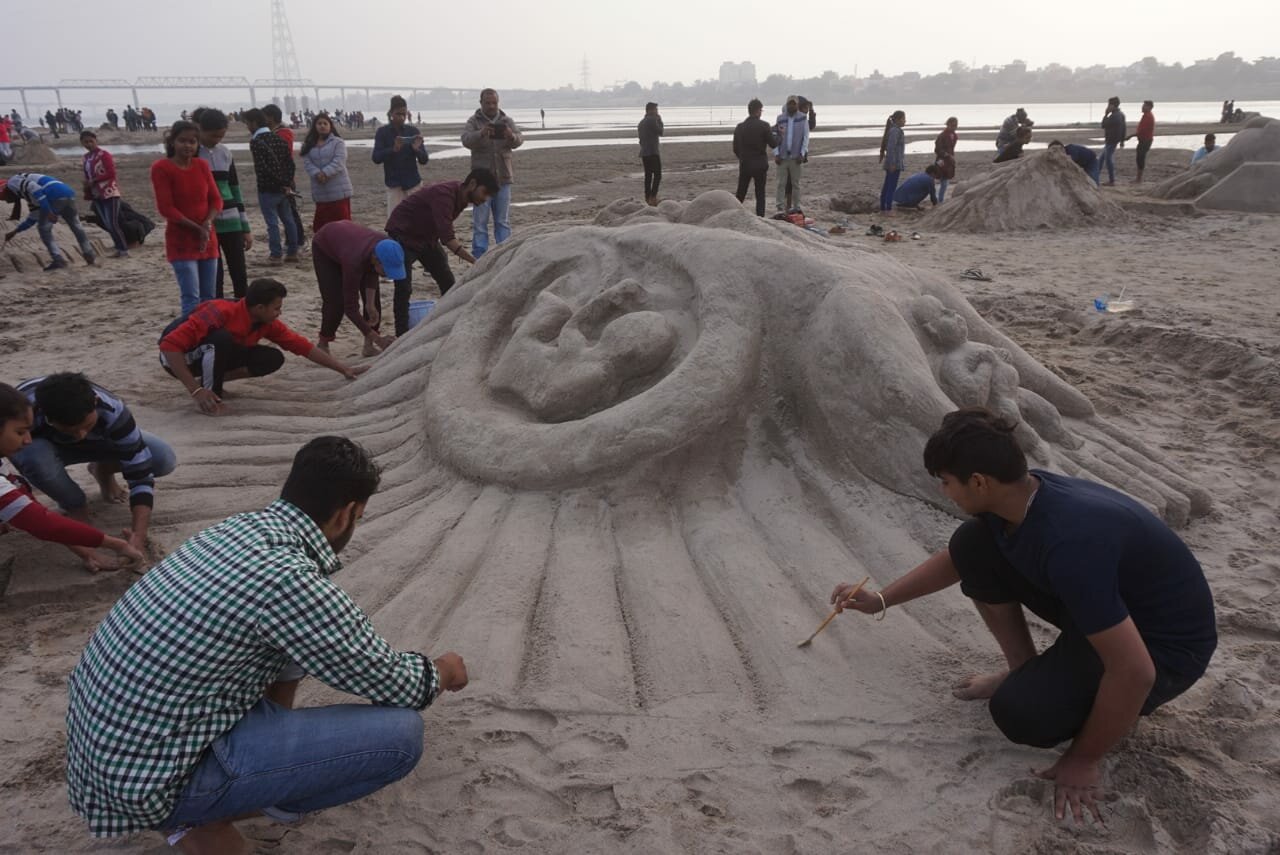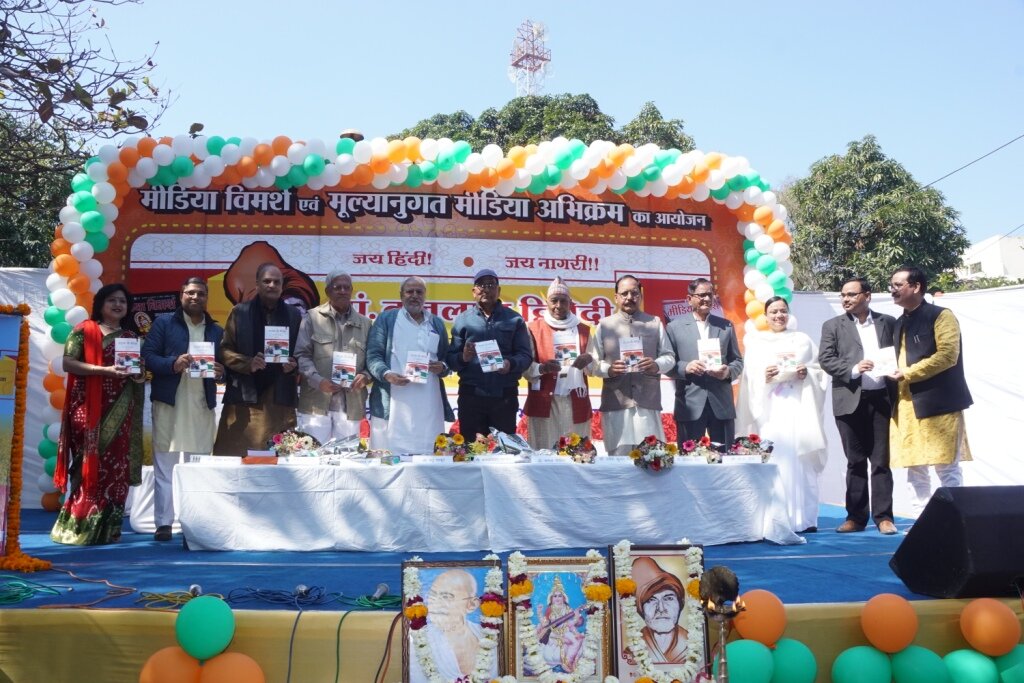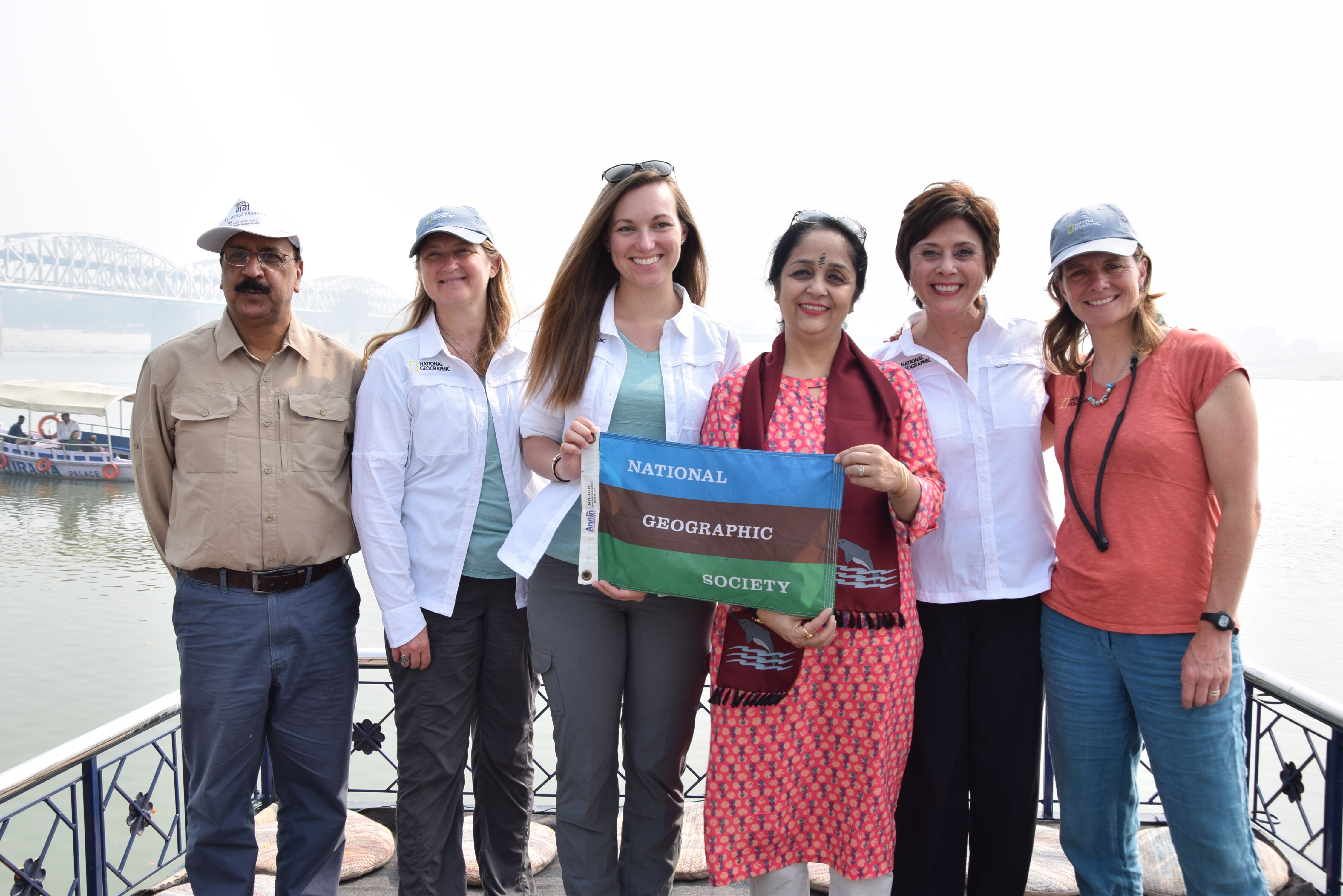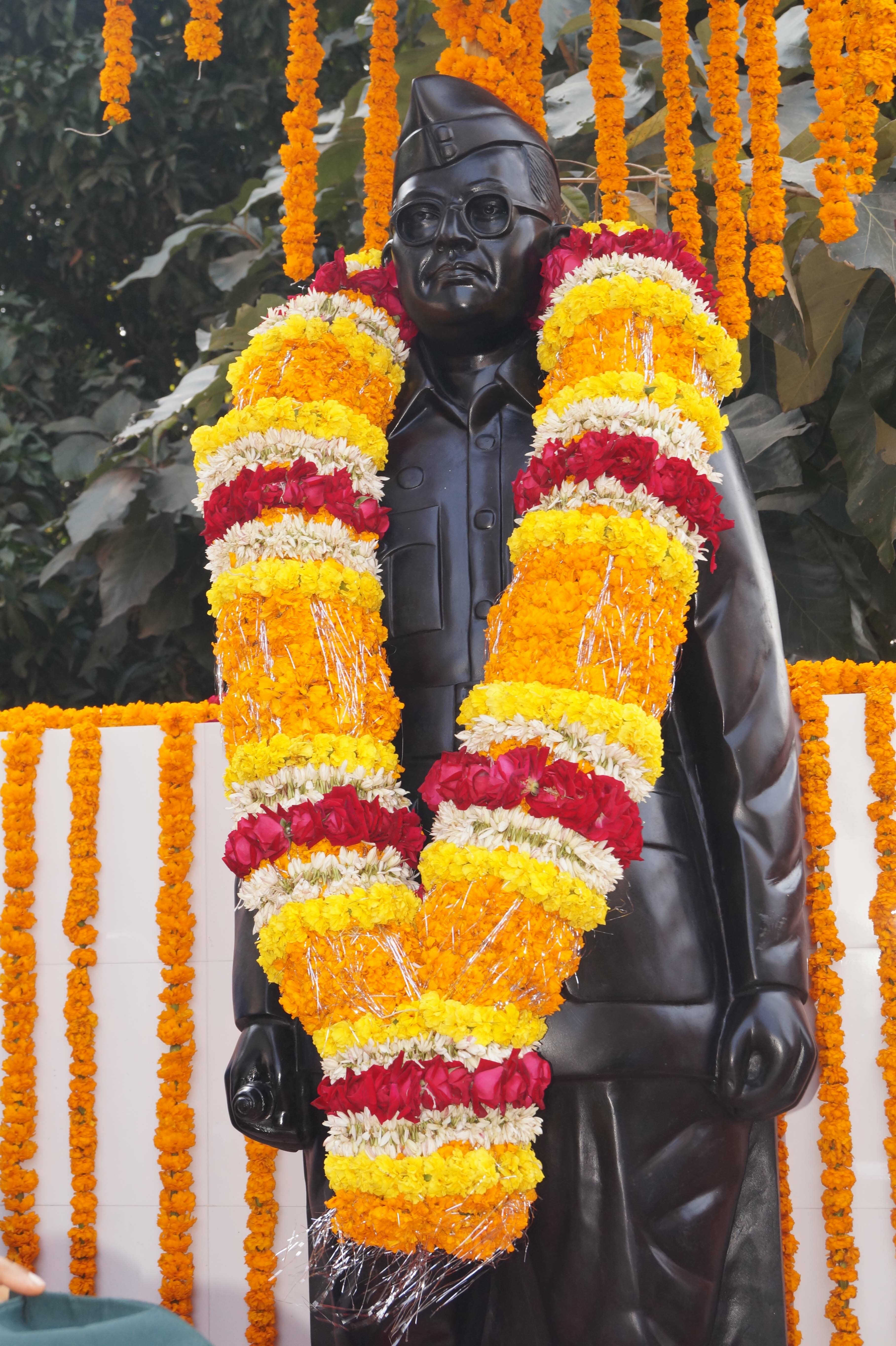‘Samvidhan Ghar’ (The Constitution House)
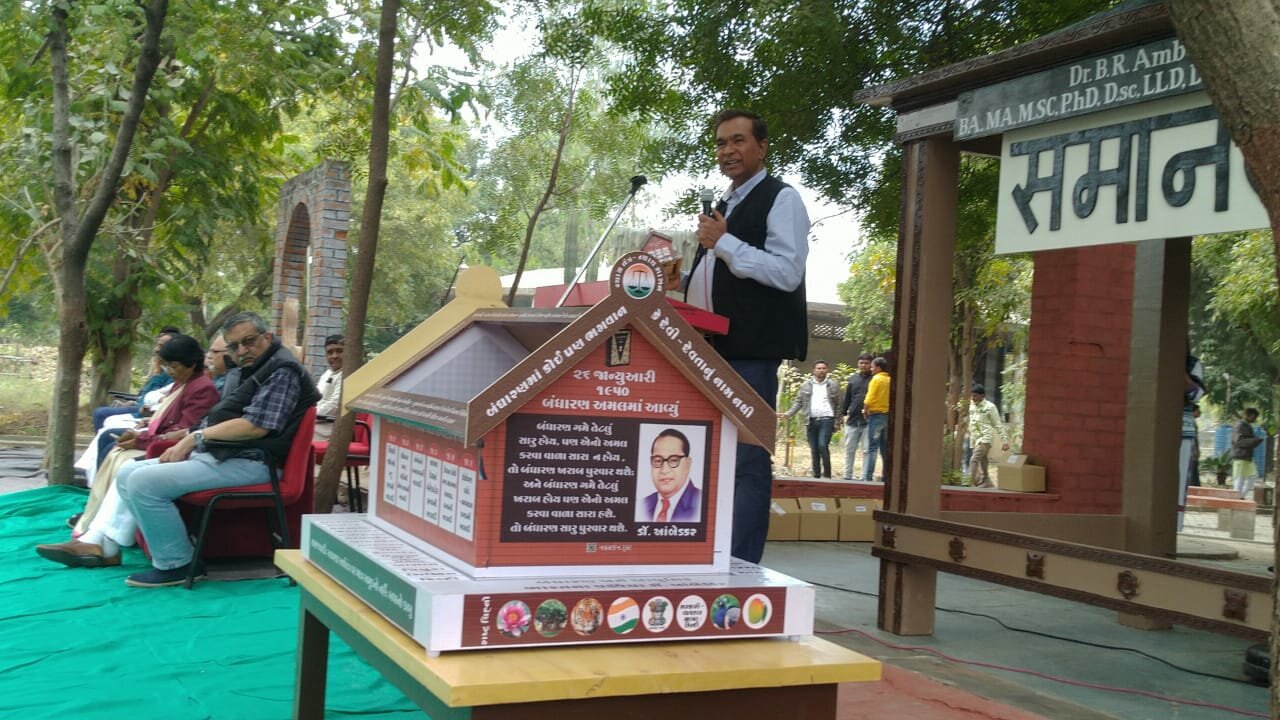
Varanasi/Ahmedabad: A group of social workers from Varanasi, the parliamentary constituency of Prime Minister Narendra Modi, returned from his home state Gujarat after learning a lesson of Indian Constitution through ‘Samvidhan Ghar’ (The Constitution House), a wooden model that speaks the basics of the Constitution.
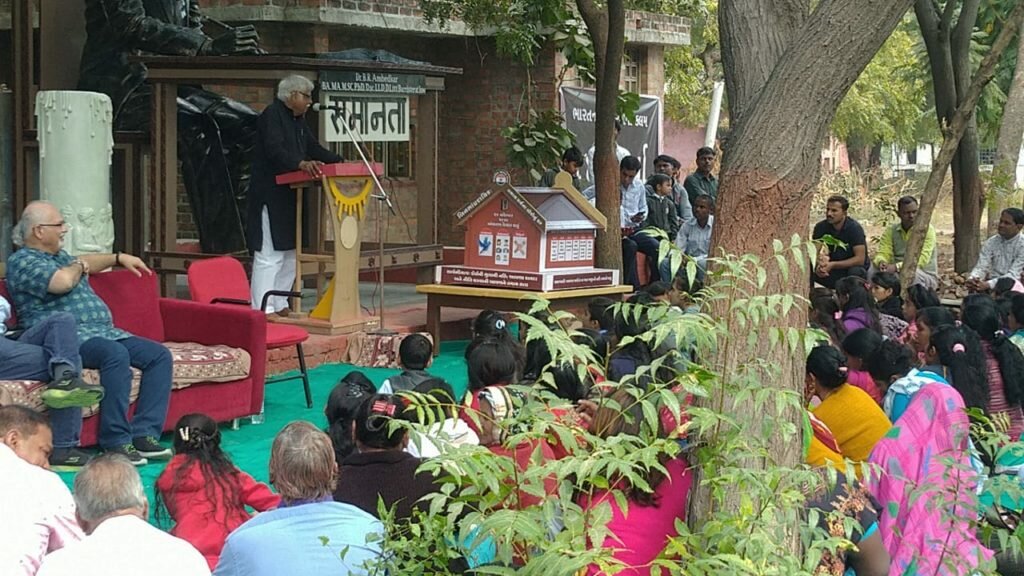
Nani Devti village, about 40km from Gujarat’s capital Gandhinagar, witnessed a unique programme -release of the Samvidhan Ghar on the eve of Republic Day on January 25. This wooden house measuring 8x6x6 explains the essence of Indian Constitution in the simplest way to educate the masses. The model has been created by Martin Macwan, an activist who runs Dalit Shakti Kendra at Nani Devti village. Prepared in different languages and dialects, the models are being sent to various states in the country to educate the people.
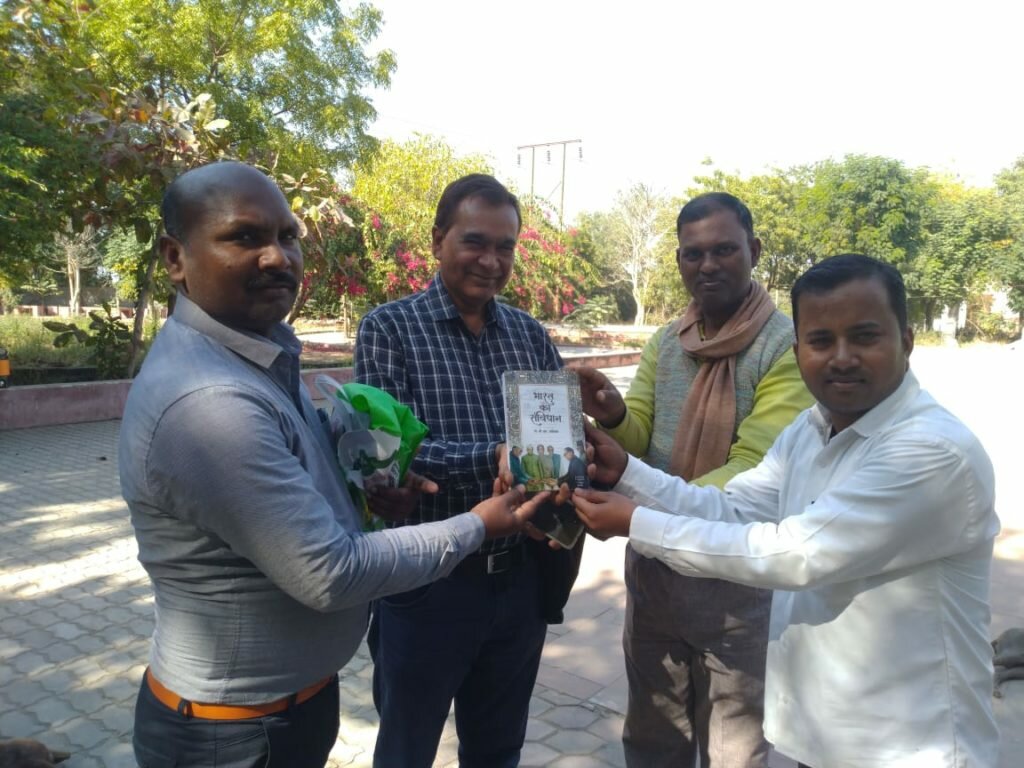
The group from Varanasi comprising of Rajkumar Gupta, Gorakhnath, Anil Kumar, Shailendra and other, who attended the programme, also got ‘Samvidhan Ghar’ to display as a tool of learning in PM’s constituency.
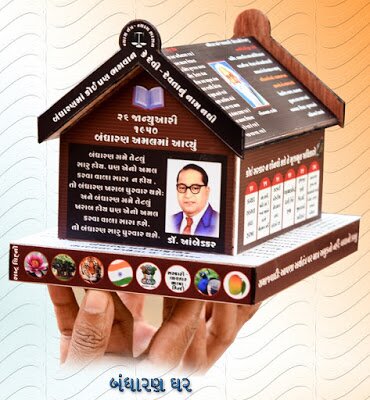
What Martin Macwan conceptualized is self-explanatory. Have a look of his note:
Each family needs a House
Many families make a village, city, state and Country.
The homogeneity makes country the larger family
The country too, therefore needs a House.
What does the House do?
It gives us security
It protects us from external dangers
It protects us from rains, excessive heat or cold.
It creates homogeneity, the feeling of ‘we are one, we are united’ among the family members.
The home protects us and makes us feel secured
We too protect the house from corrosion, damage.
We clean it every day, and may be twice a day.
We repair the roof, we paint the walls, we mend the fence.
Be it a cement-brick house or be it a mud or bamboo house
We maintain it and keep it clean and safe.
Each adult wants to build both, the family and the house
Years ago, India did not have house of its own.
It was enslaved by the British, the French, the Dutch.
They came here to do business and slowly claimed Indian soil as their property
We Indians, became ‘tenants’ in our own house.
The ‘tenants’ do not feel at home in a rented house
Because after all they are ‘tenants’ and not the ‘owners’.
India then was a home to princely states,
It was not a country
How could it be a country when it was not independent and divided into more than 600 princely states?
The revolt of 1857 against the British rule
Was an important milestone in raising national independent consciousness.
There were other incidents of revolt in India earlier too.
As the uprising grew stronger against the British Rule
The British proposed more rights for Indian ‘subjects’
They promised to design the house for India, a Constitution.
However, our freedom fighters told the British to ‘Quit India’
Said, “we will build our own house, the way we want, after your departure”.
Came 1947. We became independent and India became an independent country
But before the British departed,
They put oil in the fire and promoted communal separation.
India was split into two countries.
Later two split into three.
The family broke.
There were many who pushed the idea that the new countries should be designed according to the religious identity of the majority.
However, people and leaders of both the countries rejected it.
People of all faith continued to live in separated countries.
There were violent communal riots all over
And yet,
India decided to be ‘Secular’, a home to people of all religions.
Thus came the time for India to design and build its own house, a Constitution.
A house that can make all secured and equal.
It was not an easy task
India was home to people from different faith.
They spoke different languages.
They dressed differently.
And different was their customs, the food and the culture.
We call it diversity.
The common among all the difference was the identity,
‘We are Indians’.
This identity became the slogan
The slogan was taught to every child in the school
‘India is my country and all Indians are my brothers and sisters’
Thus began the story of designing the Indian house,
The Constitution of India.
—–
Land
To build a house,
We need a piece of land that we ‘own’
India now had a land of its own.
It owned the land, the rivers, the rivulets, the mountains and valleys, the seas and the sky.
Before we start construction and select the location of the house we do consult many people, especially who have seen the past, to check facts as the water levels that left their water marks during major floods etc. We do this, to ensure that our house can survive man natural and human designed calamities.
Framers our constitution too had studies Constitutions of various countries. We learnt about the importance of human Liberty, in the backdrop of popular movements against slavery and marginalization of masses such as the French revolution and the struggle for Peach in Ireland. They also learnt about the importance of human rights from the US history of Slavery.
—-
Ground-breaking ceremony, the ‘Bhoomi Pujan’.
Before we start the construction,
We do the ground-breaking ceremony.
People of all faith do the ceremony, as it is more cultural than religious.
We clean the land.
We dress well, we invite relatives and friends.
We declare our intention to build the house.
We dream what a house would look like.
We agree that along with our family members, the house will be open to birds, the insects, the pets, the plants and the trees.
Because, it is the nature that keeps us alive
We promise the nature, that we will protect you
India too had a legal contract with the nature
We will keep our rivers clean
We will protect forest, we will plant trees and water them.
We will have a national animal, a national bird, a national fruit, a national flower.
After all the birds, the animals, the sunlight, the air, the dust, the water are not property of a country.
They do not require passport or visa, to fly, to roam around, to flow, to hum, to shine.
They are Independent, beyond human ‘control’.
So India decided to be a home to citizens and the nature.
Thus, the ground-breaking ceremony was completed.
—
The Foundation
The Foundation has to be deep
Until it reaches the hard land.
The building on soft land may cave in.
It has to be wide enough to house a wall,
able to bear the weight of the upcoming structure.
Once, the Foundation is dug
There has to be a layer of brickbats to strengthen the foundation bottom layer over the soil.
Brickbats of various sizes are broken into small pieces,
They are dumped into foundation and watered before it is crushed until dusted
By pounding of spalling hammer
Brickbats resembles our prejudices, of caste, gender, religious sectarianism in the country.
Unless they are melted, dusted into a layer of solid concrete-like earth under the foundation wall, the spirit of ‘Secularism’ will not become a reality.
—
The Foundation wall and Otlo
When the Foundation wall, broad, rises above the ground level and up to the plinth,
we extend the outer portion to construct an Otta or Otlo.
Otlo is used by other community members,
who converse and assemble to discuss community matters, or to gossip.
Otlo becomes the community talking point.
In the times of festivals, we paint Otlo with floral Rangoli designs
In our constitution house, the Otlo welcomes all citizens with a message
‘India is my country and all Indians are my brothers and sisters’. Every village therefore has a Chora, a common assembly point. True, the challenge remains to ensure that people across differences of Caste and Religion can assemble there.
—
The door
Over the plinth level wall , we put a concrete band.
The band gives strength to the house against earthquakes.
The band also does not allow the termite from the ground to enter the home.
This band takes the load of the upper structure.
The band level also, later, matches the floor level of the house.
Over the band, we erect the door frame.
The door decides whom to let in and whom not to.
In our Constitution, the door represents the guiding principle of EQUALITY.
It is open to all the citizens of India, irrespective of caste, race, gender or religion.
The award of citizenship in India is not based on Religion.
The constitution does not have name of any God or Goddess in its pages.
—
The Windows
The windows in our house provides us with oxygen-rich fresh air, and the sunlight. We fix windows on both the opposite walls, cross ventilation, to continue receiving light and air with the change in direction of the earth and wind. The absence of windows would suffocate us and lack of oxygen would depress us.
The windows in our Constitution represents Fundamental Rights on one wall. The Fundamental rights are rights which no Government can take away. On the Contrary, it is bounded duty of the State to protect fundamental rights of the citizens.
Article 14 guarantees that all citizens are equal before the law and will have equal protection of law.
Article 15 says that the State shall not discriminate with any citizen on the grounds of Race, Caste, Sex, Religion or place of Birth.
Article 16 guarantees equal opportunity to all in Public employment.
Article 17 makes practice of Untouchability, a punishable offense.
Article 21 guarantees all citizens right to life with dignity. Merely surviving in dire poverty is not a dignified life.
Article 25 gives right to citizens to practice, profess and propagate faith according to their conscience. Whether to believe in religion or not, or to find for what is religious is the right of the citizens and no scriptures can dictate.
The windows on the other well provide liberties to the citizens; freedom of thought and expression; liberty to assemble without arms, peacefully, to form associations, to move around the country without obstruction, to reside in any part of the country and to do any profession of choice. No one can be forced to stick to caste based occupations.
India has witnessed several riots against reservation.
Why reservation when we are all equal, is the argument.
The Constitution has an answer.
The Constitution provides equality but the inequality in society, economic and social is a reality. We need to create conditions through reservation, to ensure all are equal in true sense. The reservation exists for Dalit, Tribal, OBC and the Women in the fields of Public services, higher education and electoral politics.
—
The roof
Roof is important to the house. It protects us from rain and external damages. The roof needs maintenance. House without roof holds little meaning.
The roof in the Constitution resembles to the duties of the citizens. Rights and duties of the citizens are two sides of the coin. If we focus only on the rights and ignore the duties the roof can collapse.
Three duties of the citizens are eye-catching and tells us how deeply the Constitution has thought over them.
All citizens are asked to transcend narrow religious, linguistic, regional and other divisions and promote harmony and brotherhood.
All citizens are asked to renounce practices which are derogatory to dignity of women.
All Citizens are asked to develop the scientific temper, humanism and the spirit of inquiry and reform.
We all like to climb over the roof to fly kites especially. The roof also gives us the larger view of our village or area. We feel elevated on the roof. We are proud of our roof.
The Constitution is equally proud of the National anthem. When we recite the anthem, the words create images before our closed eyes of India, its mountains, Its rivers, Its ocean, Its people. Original song is longer than we sing and it was composed by Rabindranath Tagore, much before India became independent.
—
The Minorities:
In our family we care most for children, the aged and the sick as they are the minority in our family.
The constitution of India provides special protection to the Minorities. In India we have defined minorities based on religion and Language. The special protection is to ensure that a section of society on the grounds of being Majority cannot deprive the Minorities.
The rights of Minorities include:
The right to preserve ones language, script and culture.
The right to establish and administer educational institutions and avail State funding without discrimination.
The right to admission in State run educational institutions.
The Constitution prohibits religious teachings in State aided educational institutions.
—
The Basic House Rules which are non-negotiable
Each family has governing rules for the family to function which are non-negotiable.
India too governing rules set up by the Constitution which are non-negotiable for the governance of the Country.
These rules or rather the founding principles are the following:
Sovereign: We are not slaves. We will make our own laws. We will determine our Policies.
Democratic: The Government shall be of the People, for the People and it will be by the People.
Socialist: The economy of the country will not be determined and controlled by few, but it will be controlled by all.
—
Water Well and Food Storage:
Food and water are basic requirement of the Citizens. They are linked to both, the Policies of the State and the Environment.
The Constitution has spelt ‘Directive Principles for State Policies’. The Policies have to be such that they end in fulfilling the rights of the citizens enshrined in the Constitution.
While framing these Principles, the Constitution has affirmed that:
The Economic Inequality in India is a reality. Everyone does not have land, employment, regular income and asset. The rich have more economic power than the poor. The men has more economic power than women, though it is women who contributes much more labour as compared to men.
The Social Inequality in India is a Reality: There are more poor amongst Dalits and Tribal communities because of social realities such as Caste. The aged, the sick, the women and the Minorities are more vulnerable to deprivation. In spite of its wealth, Malnutrition amongst children is a reality.
Therefore, what should be the Policies which can eradicate economic and social Inequality? Directive principles are guiding principles for the State to frame Policies. The various programs that have emerged in India, after Independence such as Land re-distribution; Law on Minimum wages, MNREGA, the rights of workers of organized or unorganized sectors, compulsory education until the age of 14, Rights of women in the family property have been rooted in these directive Principles.
Directive Principles also focus on access to justice, No citizens be deprived of justice for lack of money; Hence there is Free Legal Aid as a right. The separation of Judiciary from the Executive is ensured.
Lastly, there is focus on protection of environment; the land-forest-water and air. The Principles direct us to adopt scientific agriculture and animal husbandry.
But, just like in the case of water well, as the water can not rise itself and fill our pots, the Policies and Programs do not walk to our doorsteps. The citizens have to pull the water from the well through handpump. The alertness from the Citizens about their rights requires to be maintained at all the times.
—
The owners of the house:
Who owns the House?
The house of Indian Constitution is owned by all its citizens irrespective of their caste, sex, language, religion or region.
—
The Name Plate:
Each house has a name plate. A name on the plate that defines and tells the world about the unique identity of the house.
The name plate of the house of Indian Constitution is:
The Undivided Indian State. Amidst social, linguistic, religious, cultural and linguistic diversities, this is the house of all, UNDIVIDED INDIAN NATION. Therefore there was no other Nation, there is no other Nation and there will be no other Nation.
—
Few words of the people who built house:
Our fore-parents, who have struggled for their life to build the house, always depart with few words for the next Generation to counsel them.
What were the words of framers of Indian Constitution?
Dr Ambedkar Said:
However good a constitution may be, it is sure to turn out bad because those who are called to work it , happen to be bad lot. However bad a constitution may be, it may turn out to be good, if those who are called to work it, happen to be a good lot.
Our struggle as citizen continues as expected by the framers of the constitution to ensure that our rights are protected, as attempts to take them away will be a reality.

